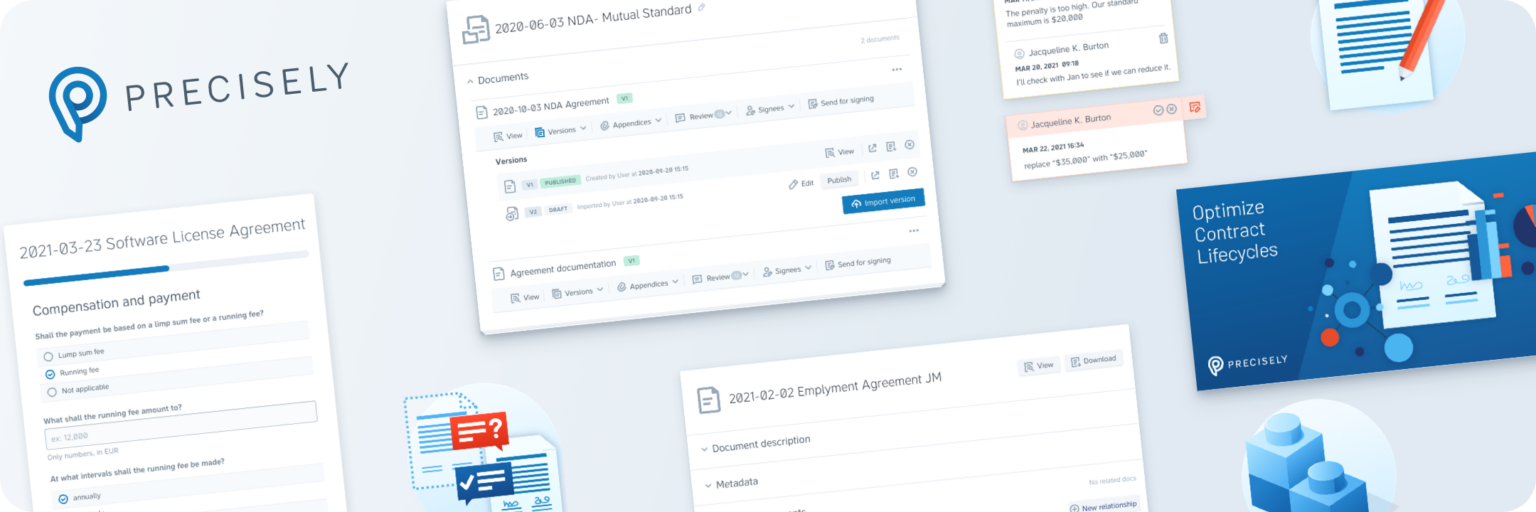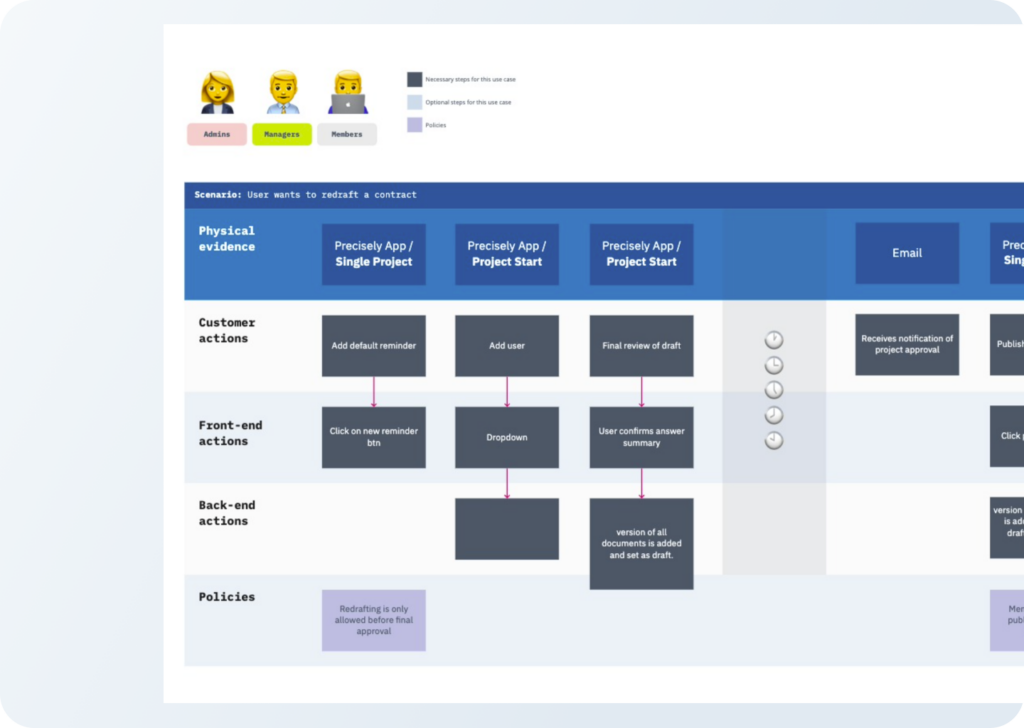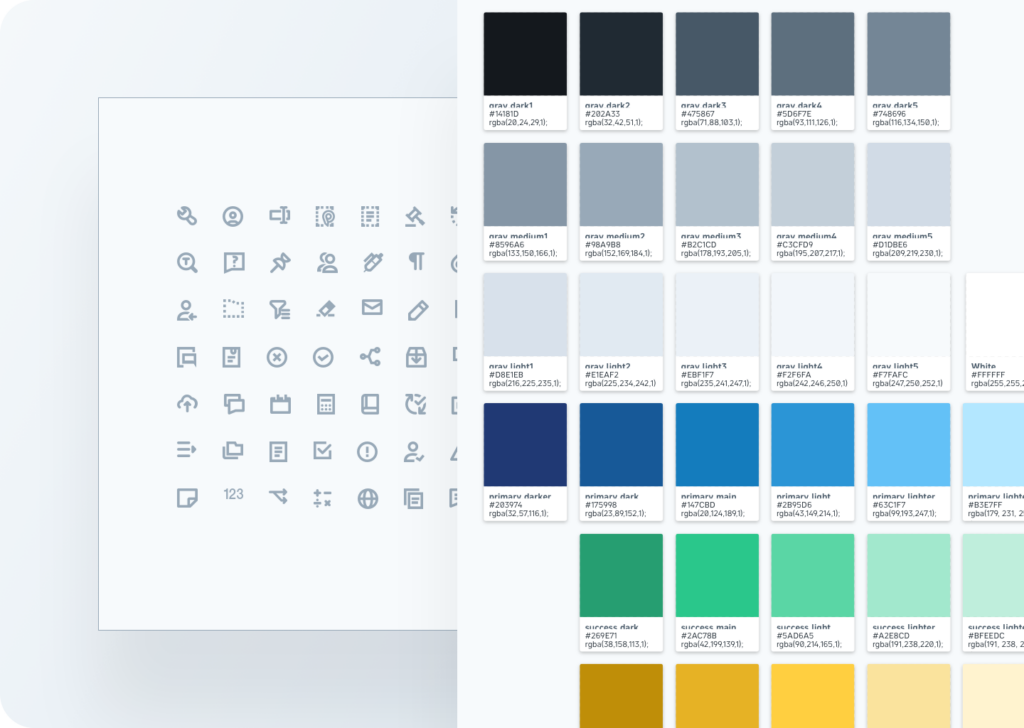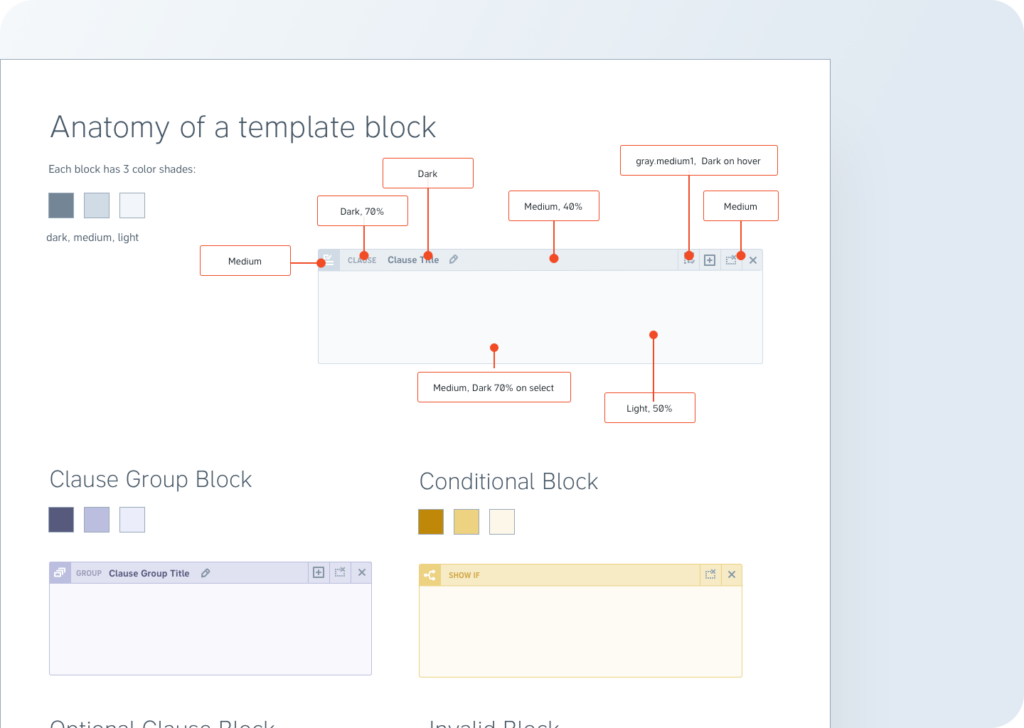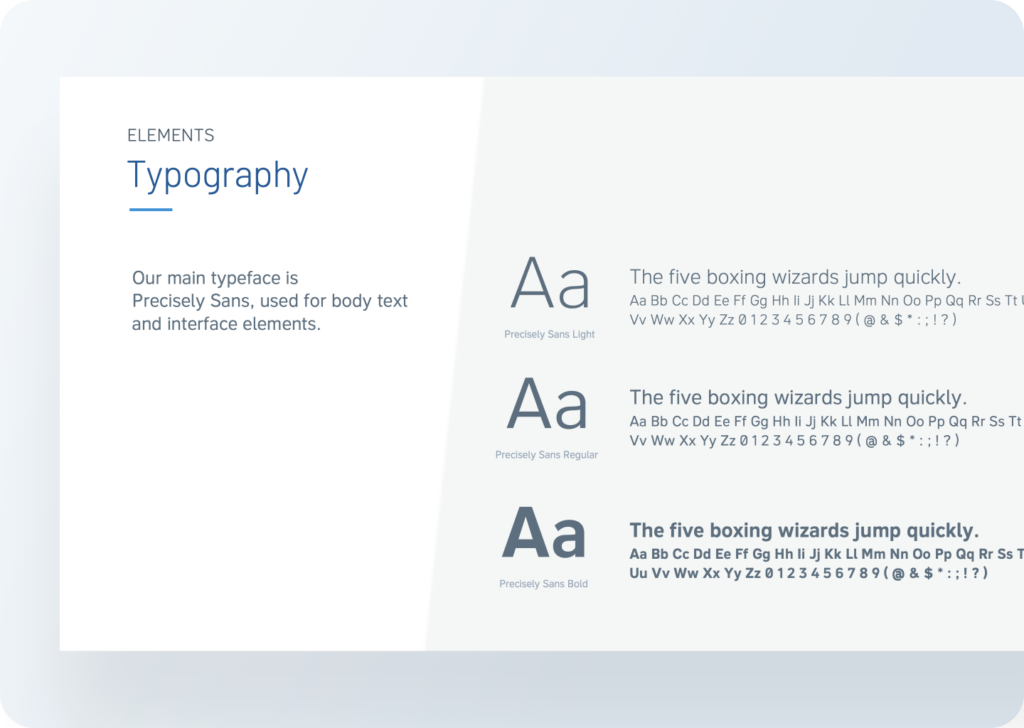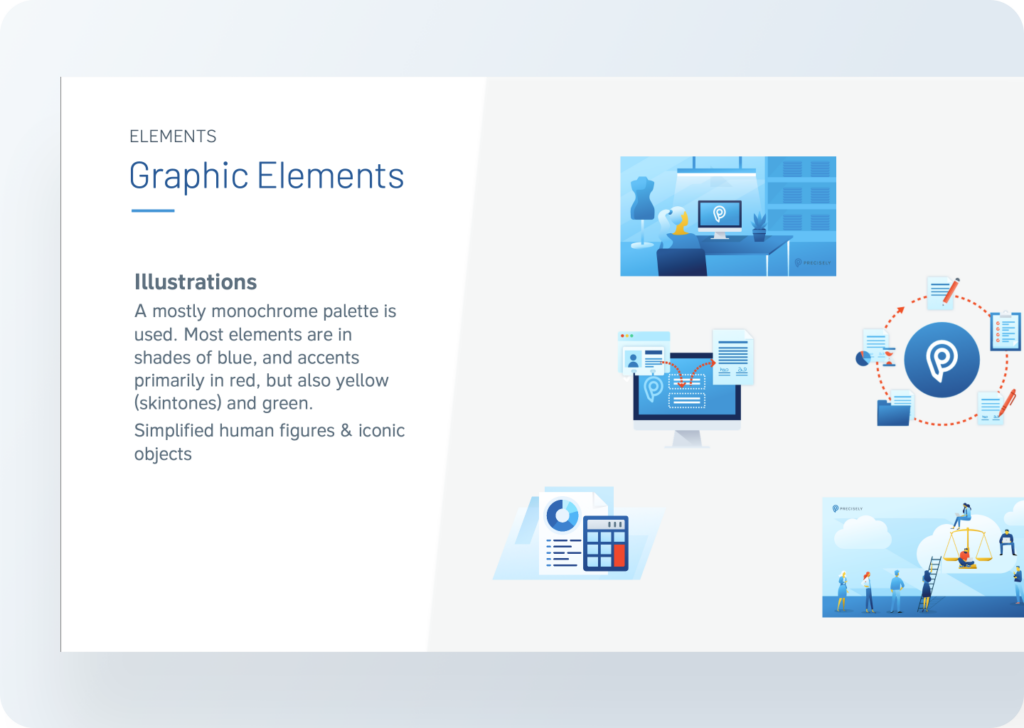Empowering legal teams
Precisely wants to revolutionize contract management through their intelligent contract platform, that enables legal teams and small companies to successfully draft, sign, and manage their contracts.
Read on to see how my work with them helped Precisely succeed.
Details
Year: 2017-2021
Employer: Precisely AB, Sweden
Title: UX & Design Lead
Role
- UX Research
- Wireframing
- Testing
- Visual design
- Design System management
- Branding
- Marketing & Web design
Innovative Product Feature Design
Challenges
Precisely is a very complex system. It has functionality for templating, drafting, reviewing, signing and managing contracts. It also had many different user types, ranging from legal team members to signees. The UI needed to be understandable for every role, and present only the needed functionality in a clear and compelling way. A lot of functionality needed to be added in order to achieve a good market fit, and it was challenging to integrate it into an already complex system.
Processes
I worked as an integral part of the product team, planning, ideating and implementing features. We worked on a dual-track agile model, where features would be ideated and designed in one track and implemented and released in another. The usual process followed these steps:
- Discovery and brainstorming
- Wireframing
- Testing
- Iteration
- Visual design
- Documentation and handoff
- Feedback and ideation
Outcomes
The introduction of these features resulted in a good market fit and significant boost in client acquisition. Key performance indicators, such as user retention and task completion rates, demonstrated marked improvements. This contributed to the company acquiring a further round of funding.
Design System Implementation
Outcomes
The scalable design system reduced design and development time significantly, increasing cross-functional team collaboration. It also improved the platform’s consistency, leading to a polished and user-friendly interface, while reducing design inconsistencies. This resulted in faster feature rollouts and easier onboarding for new team members.
Visual Brand Strategy and Guidelines
Challenges
When I came into Precisely, there was little branding beyond a logo and colors, and even these were used inconsistently. As the company grew, the challenge was not only a growing need for visual material, but figuring out what our brand meant and how to express it while in a fast-paced changing landscape.
Processes
I created brand visual guidelines that encompassed logotypes, colors, fonts, and illustration styles. I created a custom typeface, Precisely Sans. Towards the end of my work at Precisely, the company had evolved to a point where it needed to be redefined. I led the effort into brand redefinition & rebranding.
Impactful Marketing Material Creation
Outcomes
The compelling marketing materials I created supported Precisely’s business growth, attracting more potential clients and partners. The visual assets that explained complex subjects in simple ways, contributed to a higher conversion rate on the website and played a significant role in Precisely’s expansion strategy.
Results
Outcomes
In conclusion, my work at Precisely as UX & Design Lead contributed to significant improvements in the user experience, brand identity, and overall business performance.
By implementing a comprehensive visual brand strategy, ideating and improving product features, establishing a design system, and producing gripping marketing materials, I was able to contribute to the company’s continued success in the B2B SaaS contract management space. The outcomes reflect the positive impact of my contributions on Precisely’s growth and user satisfaction.
Lessons learned
Work at Precisely was fast-paced and constantly changing, which gave me opportunities to constantly learn and grow.
I was fortunate to have a team where I was allowed to set the groundwork for a successful product and brand design strategy. .

